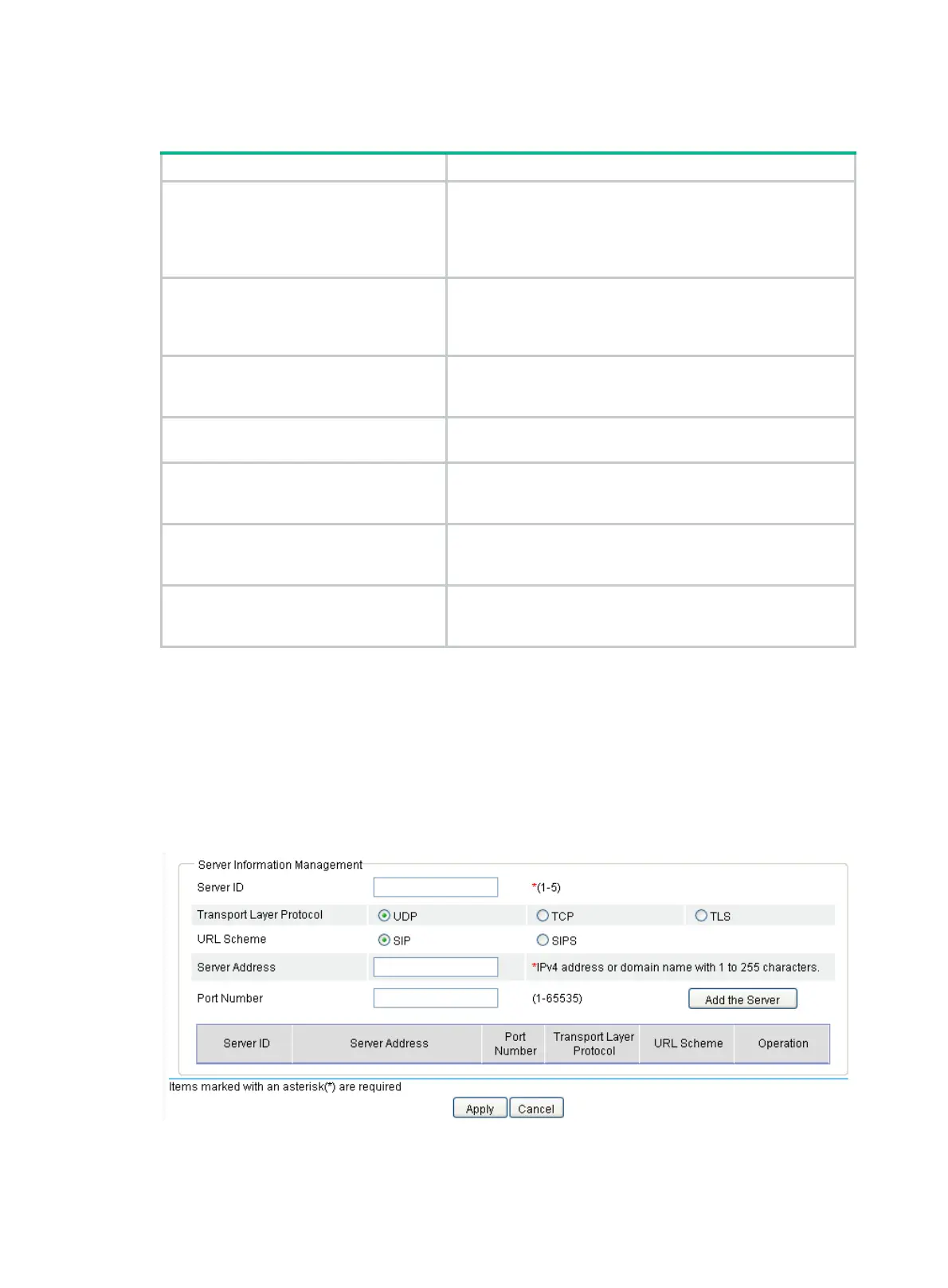300
The following table describes how source address binding works upon different conditions:
Condition Result
Configure a source address binding when
ongoing calls exist.
• A new source address binding for media does not take
effect for ongoing SIP media sessions but takes effect for
subsequent SIP media sessions.
• A new source address binding for signal takes effect
immediately for all SIP signaling sessions.
The bound source interface or the
interface whose IP address is set as the
source address is shut down.
The source IP address binding becomes invalid and will not
work until the interface is up. During the shutdown period, the
gateway automatically gets a source IP address for sent
signaling or media flows.
The bound static IP address is removed or
modified, or the bound interface is
removed.
The source IP address binding is removed.
The bound interface is disconnected.
The source IP address binding is cancelled, and restored
when the interface is connected.
Configure a source address binding when
the physical layer or link layer state of the
corresponding interface is down.
The source address binding does not take effect and the
gateway automatically gets a source IP address for packets.
The DHCP lease duration expires and the
bound interface dynamically obtains a new
IP address from the DHCP server
The new IP address will be used as the source IP address.
The SIP registrar is enabled.
The subsequent registration update messages use the source
IP address newly bound for signaling streams to initiate
registration.
Configuring server information management
1. Select Voice Management > Call Connection > SIP Server Group Management from the
navigation tree.
2. Click Add.
The page for configuring a server group appears.
Figure 692 Configuring server information management
3. Configure server information management as described in Table 258.

